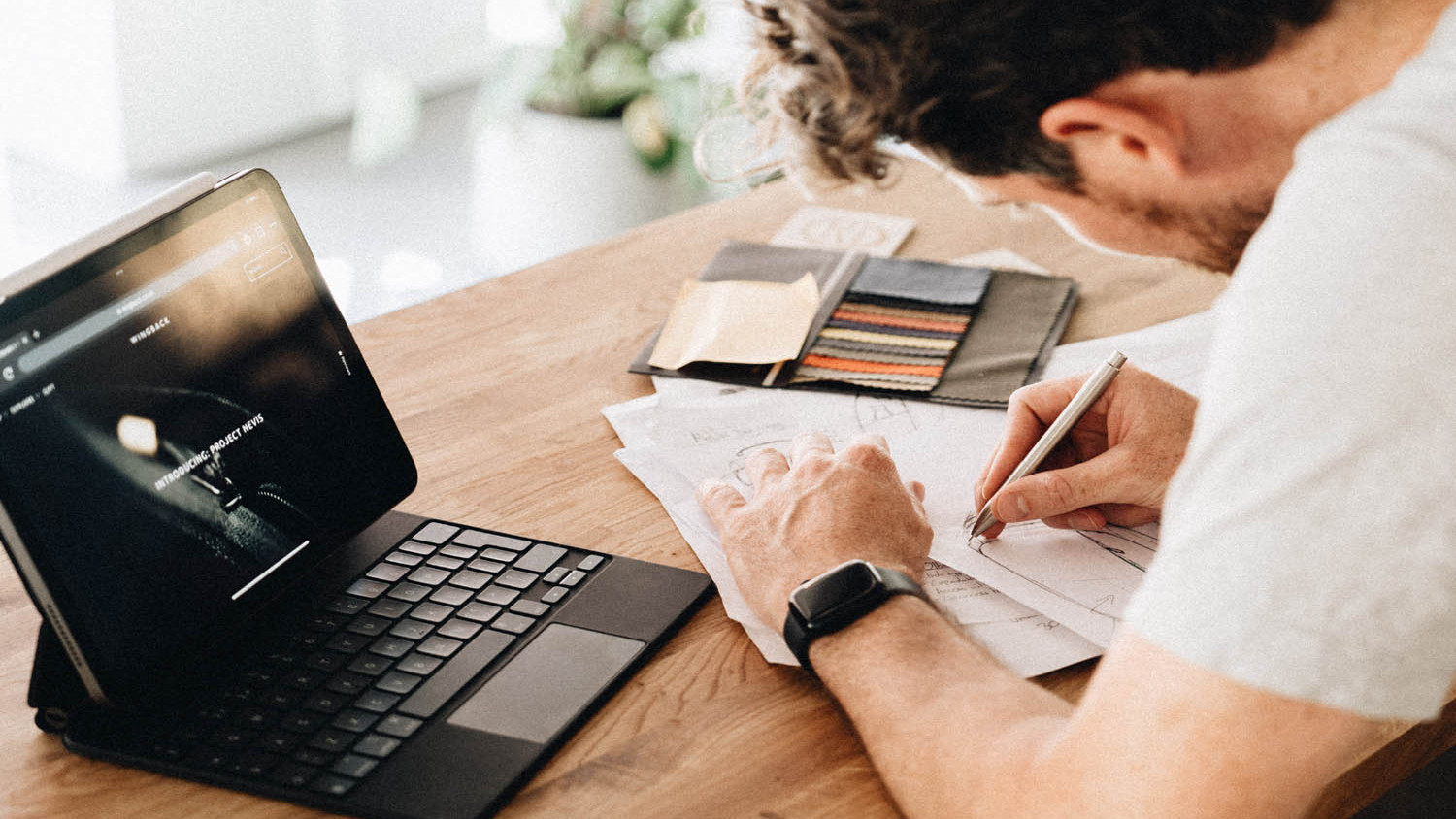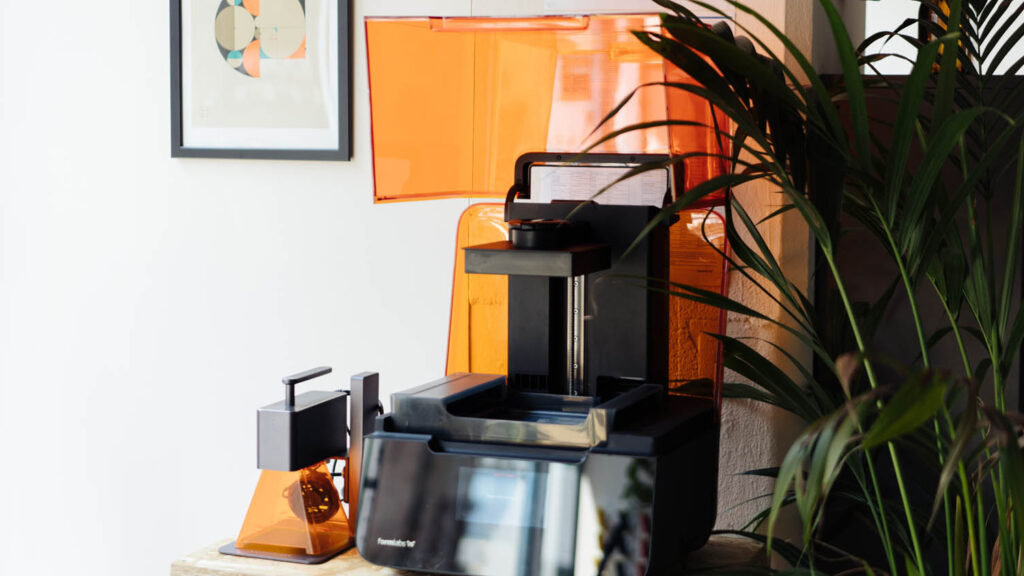Wingback is turning its back on throw-away culture, in favour of creating products that last for generations. Stephen Holmes meets the team adding digital design touches to the creation of traditional leather and metal accessories
Sat in Wingback’s London headquarters, Alasdair MacLaine pulls his great-grandad’s brass mechanical screwdriver from his pocket and admires it.
The screwdriver’s aged brass body is standing up well to its years in service. Not that it’s used much today, given the new workshop that MacLaine has at his disposal, replete with tools, 3D printer, leather-working benches and photography area.
Situated at OXO Tower Wharf on London’s South Bank, the workshop is part of Wingback’s design studio and showroom. The iconic art deco building in which it is located is as old as the screwdriver itself, but also provides a modern home for an exciting list of young hardware companies.
The idea of blending of traditional materials and new ideas is completely in step with the ethos behind Wingback itself. As a producer of leather goods, accessories and stationery, every product is designed to last a lifetime, and then some.

The inspiration for its stationery line came directly from that inherited screwdriver, but the company’s starting point can be traced back to founder and design director MacLaine’s time working at Dyson, in its new product innovation department. There, he was given carte blanche to come up with new concepts, and an extensive R&D budget “Which is absolutely lovely,” laughs MacLaine, explaining that his work at the company included the development of the Airblade Tap and Dyson’s hairstyling tool, the Airwrap.
“They’re two things I’ve got to my name from Dyson, which I’m quite proud of and are really cool. But I think after four years, I spent my evenings and weekends just sort of tinkering with my own products and coming up with concepts and reading business books.”
It was around this time that Kickstarter was increasingly featuring UK projects and backers, but MacLaine quickly realised he wasn’t going to launch the next Dyson-esque product on that platform.
“So I asked: ‘What is the most simple product I can break down the design of, so it’s as simple as possible to make with no barriers to entry, no standards or anything like that and fairly easy to prototype, to a point where I’m ready to take it to market?’ And then I landed on this leather wallet,” he says, reaching across to a shelf to pick up a small leather card holder.
“I’d actually lost mine and there was nothing I found that I particularly liked, so I decided to make my own.”
Having laser-cut and hand-stitched the prototype cardholder, MacLaine took it into work to show some of his colleagues, who immediately wanted one.
“I bought a little [leather] hide from a cobbler and made a few of them, and then it clicked: that’s the product that should be launched, it’s so simple.”

Wingback // Marrying tradition and modern tech
The product was further refined, marrying the tradition of leather working and saddle stitching with modern laser cutting engraving to make the stitching process more exact and efficient versus manual punching. From there, it was offered up to the crowdfunding gods on Kickstarter. Things went far better than expected, raising around £21k in the campaign’s launch month.
Quickly, a single toe in the water on Kickstarter became a winter spent fulfilling launch orders, designing a website, setting up a Shopify account, adding product photography and designing a full range of products.
“It was hard work,” says MacLaine, “trudging down to the shed in mid-December, when it was snowing outside, just to go clean up leather and stitch stuff up. But it was good fun!”
Fast forward a few years and Wingback has expanded its range of leather goods, but the itch to design more technical products returned, and MacLaine began to add some machined metal elements to the range. This sent him back into the world of 3D CAD, manufacturing drawings, and finding new suppliers, even picking up a Formlabs Form 1 3D printer to build prototypes.
Today, Wingback’s range of products has expanded considerably, from mechanical pencils to flasks, all boasting carefully considered details, supremely functional mechanisms and hard-wearing materials.
Wingback’s mechanical pens, for example, feature a bespoke ‘bolt-action’ movement that gives the user a deeply satisfying ‘click’ when the nib extends or retracts. MacLaine brings over a shoebox of 3D printed prototype models, pulling out the first iteration. “That’s where I started, just a big, chunky, capped pen.”
The journey of developing the mechanism can be mapped through the polymer models, before MacLaine found a way to hide it inside the main body of the pen, producing a clean aesthetic around it.
The design was repeatedly iterated on in Autodesk Fusion 360, while Wingback’s 3D printer was upgraded to a Formlabs Form 3, using its Tough 1500 resin to accurately produce the moving parts.
MacLaine says another of the Form 3 resins, Clear, will be useful as mechanisms continue to develop and grow more complex, allowing him to see what’s going on inside and remedy any design issues.
The Formlabs Flexible resins are used for gasket designs, which form part of Wingback’s belt-and-braces approach to long-lasting, functional design – such as the double seals on the lid and neck of its flasks, promising an end to leaks and drips.
MacLaine explains that this comes from looking at a lot of accessories and stationery on the market that are released as an afterthought. “A lot of them are just bought off the shelf and labelled with whoever’s branding. So, we said, can we really consider these products, break them down, simplify them and build them back up in the most functional way possible? And then the aesthetics come out of that function,” he says.
“In terms of the build, everything’s over-engineered just slightly. To be perfectly honest, wall thicknesses are just a little bit more than you think you’d need and I will take design cues from products that have lasted the right length of time.”
The designer likens it to comparing products from the last century to present-day products, where metal gears or solid castings have given way to parts designed at cost and for faster manufacturing.
This idea of longevity fuels Wingback’s mission to build responsible products. A member of 1% For The Planet, and offering carbon-neutral delivery, the company is keen to reduce its use of plastics, which are often used in disposable pens and cheap wallets and contribute greatly to the 8 million tons of plastic waste dumped in our oceans every year.
Valuable feedback
While product details are honed by the designers, using crowdfunding for initial launches has enabled Wingback to remain lean while it gauges likely demand.
Decisions such as determining a coating finish for a new black pocket flask are made by the team, but the product’s popularity and feedback from a Kickstarter run often influences what eventually appears as a full production run.
The company also takes care to develop limited edition models that include etched artwork. “It’s really nice to work with artists, because we’re promoting them, they’re promoting us, and you end up with a collaborative product.”
MacLaine adds that, for him, this works better than the current trend for investing heavily in influencers to spread marketing around social media.
Also off the list are discounted items. “We’ve got a policy not to hold sales as a business,” he says. “I think sales are quite devaluing for brands, and it’s a pretty slippery slope. And also, we charge an honest price for the products we’re selling. We make a little bit of money on them, but they cost an awful lot to make, hence the price point. So any kind of discounting I feel kind of cheapens the product a little bit.”
This all falls into the idea that, if a product lasts as long as it is designed to, not only will it represent better value for the user and have less environmental impact, but also it will also take on more meaning.
“The kind of product we’re making is one that you hope transcends beyond functional beautiful products and becomes one of those things you have an emotional connection to over time,” explains MacLaine, still holding his great-grandad’s screwdriver, over a century on from when it was made.
With a product range built with the same solidity, the next 100 years shouldn’t be a problem.
This article first appeared in DEVELOP3D Magazine
DEVELOP3D is a publication dedicated to product design + development, from concept to manufacture and the technologies behind it all.
To receive the physical publication or digital issue free, as well as exclusive news and offers, subscribe to DEVELOP3D Magazine here








